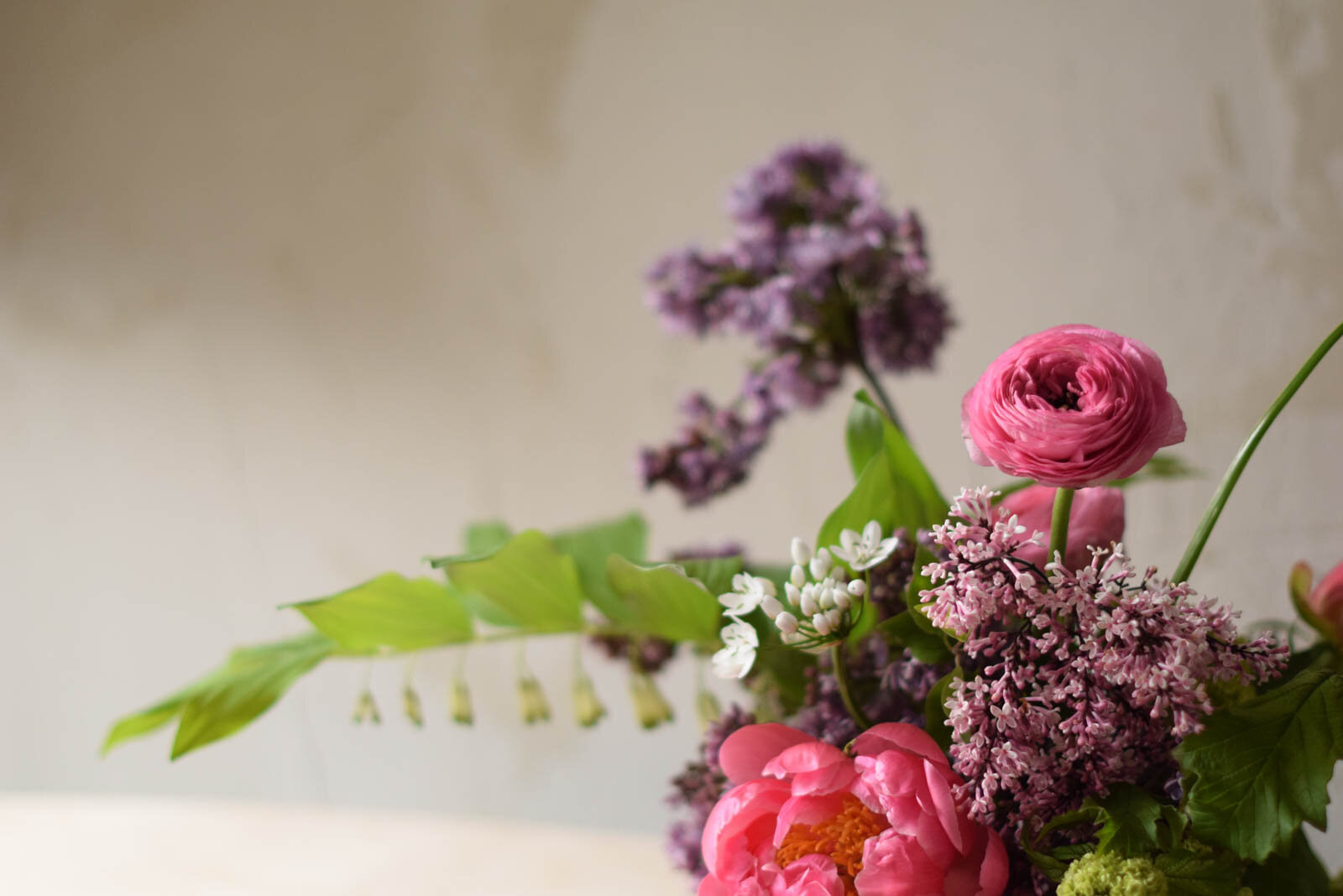ALL YOU DIDN'T KNOW ABOUT FLORAL RECIPES- AND WHY EVERY FLORAL DESIGNER NEEDS THEM.
What is a floral recipe, why do I need one, and what the heck are you talking about?
Every now and then, my blathering starts buzzing around the same topic. I’ve been using some pause time to hone my recipes and felt some ‘splaining was in order- for you and me.
What is a floral recipe:
Just like a food recipe includes a quantity of certain ingredients, a floral recipe is an account of each stem, vessel, and material that went into making a floral arrangement. It looks like this:
This one I pulled from my handy file and is titled ‘Snack Table Floral’ which is excellent because I like snacks so much.
Qty Flower (stems)
3 Rosehip
2 Privet Berry
3 Magnolia
5 Cedar Sprig
4 Rose
4 Pine Cone
4 wire for pinecone
4 wood stakes for pinecone.
1 metallic 3” vase
What is a functional flower recipe:
A functional flower recipe is a kind of floral recipe. The difference is that instead of each individual variety of flower listed, the ‘ingredients’ are broken up by role in an arrangement.
For example, instead of listing a quantity of roses, scabiosa, cosmos, and ranunculus, I might list a quantity of base flower, sprouty flowers, and secondary flowers depending on each flowers role in an arrangement.
What is a flower role?
Each floral designer has their own way to start and carry out an arrangement. She also likely has some go to flower types for each role. Just like a designer’s style will be different, the kinds of roles she has may also be different.
It’s similar (but a little more complex) than the floral saying: the filler, the spiller, and the thriller.
My go-to roles are:
Base Flower: The inner most layer of sturdier, typically mid sized or larger flowers that act as a structural element for the entire arrangement. For me, this can be hydrangea, standard roses, lilac, sedum.
Focal Flower: Strategically placed flowers that are meant to be the focus. They are typically fewer, can be large or small, and can be more expensive. Some examples for me are garden roses, peony, lady slipper orchid.
Secondary Flower: Often more numerous, secondary flowers, are that middle layer. They help create the shape, enhance the visual complexity with shape, texture, and color, and contribute to fullness. Often many different varieties would fall into this role in the same arrangement.
Sprouties: Sprouties are the outer, airy layer. They create gesture and movement, and give your arrangement that asymmetrical, gardeney, or eccentric flare. Sprouties tend to have longer stems and smaller blooms. Some of my favorite sprouties are scabiosa, cosmos, ranunculus, spiraea, viburnum berries, and alliums.
Special bits: Special bits are texture and interest. They are there to reward the person who looks a little closer. These can be grasses, nuts, berries, pods, and any little weird thing you want to include.
Draping Flowers: ‘the spiller’. These are items have a visual weight to them and droop down. For me, this includes vines, berry branches, and sometimes flowering branches.
Foliage: I have two categories for foliage mostly because I use them in two ways. Sometimes I use foliage as an armature, into which the arrangement will be set. I mostly want this type of foliage to support and be a backdrop for the flowers. The foliage I choose for this category tends to be less spendy.
Special Foliage: is foliage that I am trying to draw attention to, I place in the special foliage category. It’s typically more expensive, and often very seasonal.
What is a signature recipe?
A signature recipe is a floral recipe that the designer feels expresses her particular style or brand. If a designer is known for a particular look (or wants to be known), the signature recipe is an account of the quantities and types of flowers that would go in that arrangement.
A designer can create a library of go-to flower recipes for each type of floral arrangement in a number of styles.
WHY THIS IS IMPORTANT:
Developing your own signature floral design recipe collection gives you a functional flower library that can be the foundation of any flower proposal, offering, or quote.
Here are the top benefits of developing your own Signature Floral Recipe Library:
Work out the costs in advance to make quotes fast.
Have a starting point for a budget conversation with your client- and know where and how to pull back if your client has a smaller budget.
Ease and speed up flower ordering.
Eliminate overwhelm by systemizing a lot of the regular stuff.
Build a look to be known for.
Have a way to calculate costs without being tied to a specific flower- freeeheeeheedom!
Friends, if you want to develop your own Signature Floral Design Recipe Collection, WE HAVE A BRAND NEW MINI-COURSE FOR YOU.
In this course, you will learn how to :
Identify your signature style
Develop floral recipes that can be used year-round, regardless of what is available,
Manage waste and flower orders with recipes to stop overspending
Some tips to sell your signature style
and Guidance about how to implement this into daily operations.
So much value and only for a little while- so affordable. Check it out.



